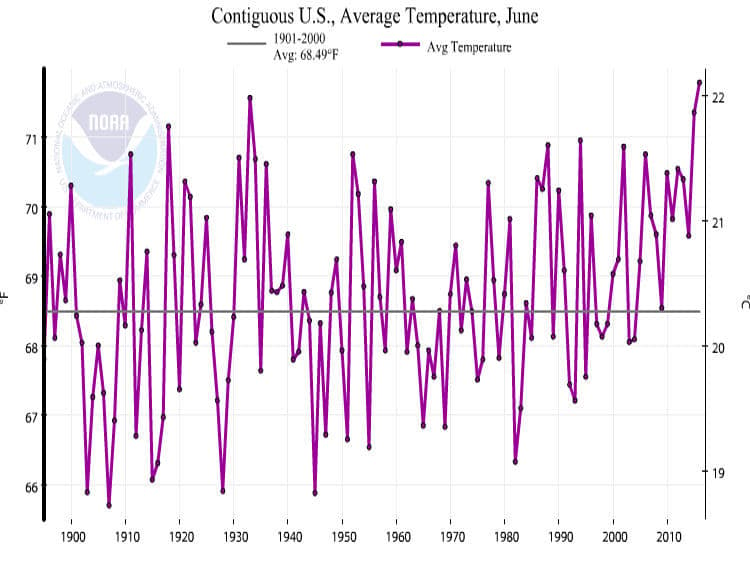2015 – The Warmest Year in the Near-surface Instrumental Temperature Record
The US National Center for Environmental Information (NCEI), the US National Aeronautics and Space Administration Goddard Institute of Space Studies (NASA GISS) and the UK Hadley Center / University of East Anglia Climate Research Unit (HadCRUT) have proclaimed 2015 to be the warmest year in the instrumental record of global near-surface temperatures. They reported that 2015 was 0.16 +/- 0.09°C (NCEI), 0.13 +/- 0.10°C (NASA GISS) and 0.18 +/- 0.10°C (HadCRUT) warmer than 2014.
Obviously, the increase in global average near-surface temperature from 2014 to 2015 could not be precisely 0.16°C and precisely 0.13°C and precisely 0.18°C, though it might fall within the range of those calculated figures (0.13 – 0.18°C). However, based on the confidence limits expressed by the producers of each of these global temperature anomaly products, the estimated global near-surface temperature difference between 2014 and 2015 would more likely fall within the range of 0.03°C (0.13°C – 0.10°C) – 0.28°C (0.18°C + 0.10°C), or 5 times the range of the calculated figures (0.05°C vs. 0.25°C).
Assuming that the confidence limits on the temperature increases reported by the producers of these near-surface temperature anomaly products for 2014 were the same as the confidence limits reported for 2015, it is statistically possible that 2014 was actually warmer than 2015. However, the linked paper suggests that the global near-surface temperature anomaly calculations are based on temperature readings with an estimated +/- 0.2°C station error, which has been incorrectly assessed as random error; and, that there is also systematic error from uncontrolled variables. The author calculates a representative lower limit of uncertainty in the calculated temperature anomalies of +/- 0.46°C; and, based on this lower limit of uncertainty, the global near-surface anomaly trend is statistically indistinguishable from zero.
The Law of Large Numbers, relied upon by the global near-surface temperature anomaly producers to report global anomalies to greater precision than the underlying “adjusted” temperatures, requires that the errors in the underlying temperatures be random. Assessments of the errors introduced by the temperature measuring instruments, their enclosures, their siting and changes in the characteristics of their surroundings suggest strongly that the measurement errors are not random; and, that the “adjustments” made to the temperature readings are not random and do not make the errors in the resulting “adjusted” readings random either.
